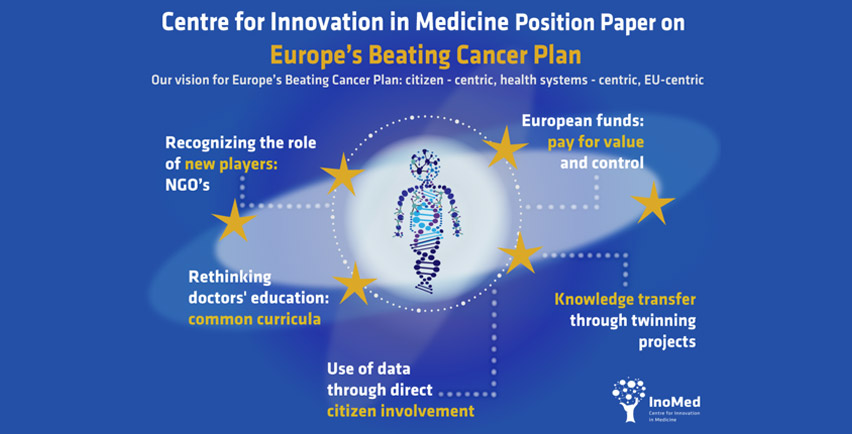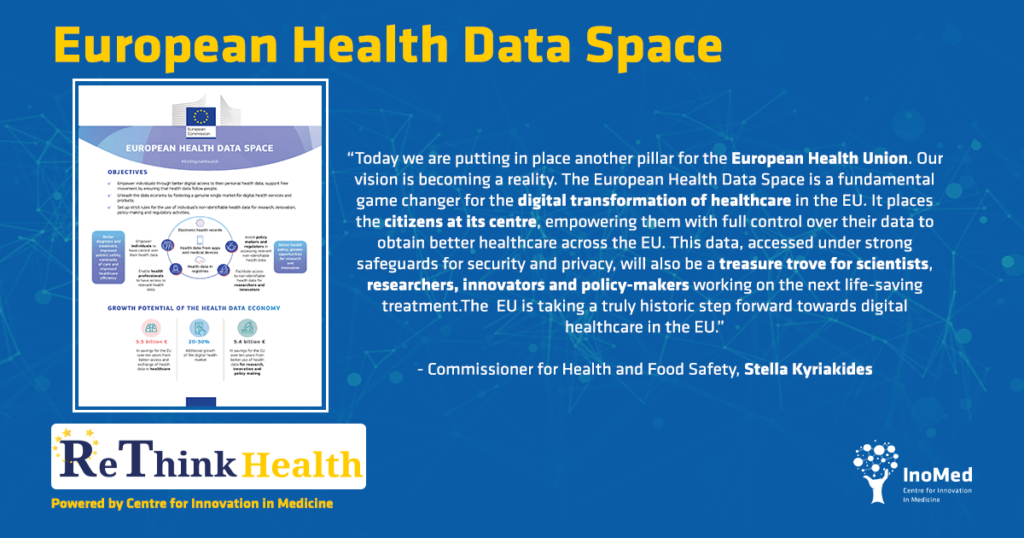In May 2020, the Centre for Innovation in Medicine published a Position Paper on Europe’s Beating Cancer Plan, recommending five major areas of action and putting together in the same phrase “inequalities” and “innovation”.
One of these recommendations referred to the use of data through citizen involvement: “The European data space for cancer must promote data donation from European citizens, cancer patients or other patients, directly to a single hub at the European Union level, in order to avoid the existing barriers of the health systems (absence of electronic records, different standards, lack of involvement in EU projects on a voluntary basis of some Member States, etc.).”

Fast forward to the 3rd of May 2022, the European Commission launched the European Health Data Space (EHDS), one of the central building blocks of a strong European Health Union, opening a new era for data use in the European Union and offering a consistent, trustworthy and efficient framework to use health data for research, innovation, policy-making and regulatory activities, while ensuring full compliance with the EU’s high data protection standards.
While the role of EHDS for research, innovation and policymaking, as it was designed in theory, will be vital, essential, one of the most important foundation principles of EHDS is that people will be in control of their own health data, in their country and cross-border: “Citizens will be in full control of their data and will be able to add information, rectify wrong data, restrict access to others and obtain information on how their data are used and for which purpose.”
If achieved, this measure will ensure that sharing health data will not be influenced by absence of electronic records (EHRs), that are a chronic problem in Eastern European countries, different standards or lack of involvement in EU projects on a voluntary basis in some Member States.
However, like any major innovative approach that aims to reduce inequalities in some areas, it has the potential to create new ones or widen the existing gap between East and West. In parallel, intensive projects and initiatives that aim at informing and educating the citizens in these Member States should be put in place as soon as possible. The impetus for action must come from the EU level, but the actions should be designed taking into account the experience of civil society at the national level, creating a balance between European vision and Eastern reality.

